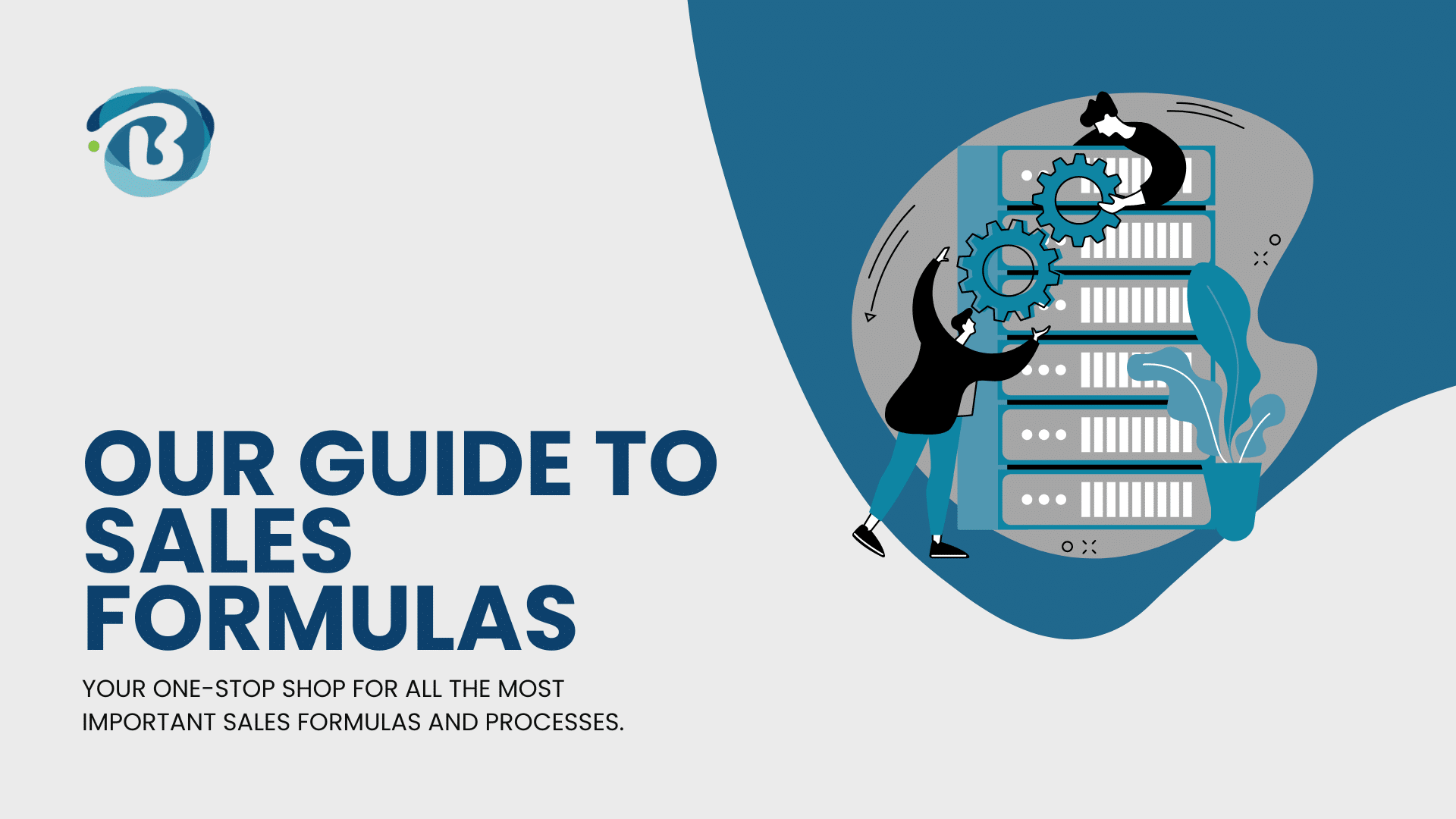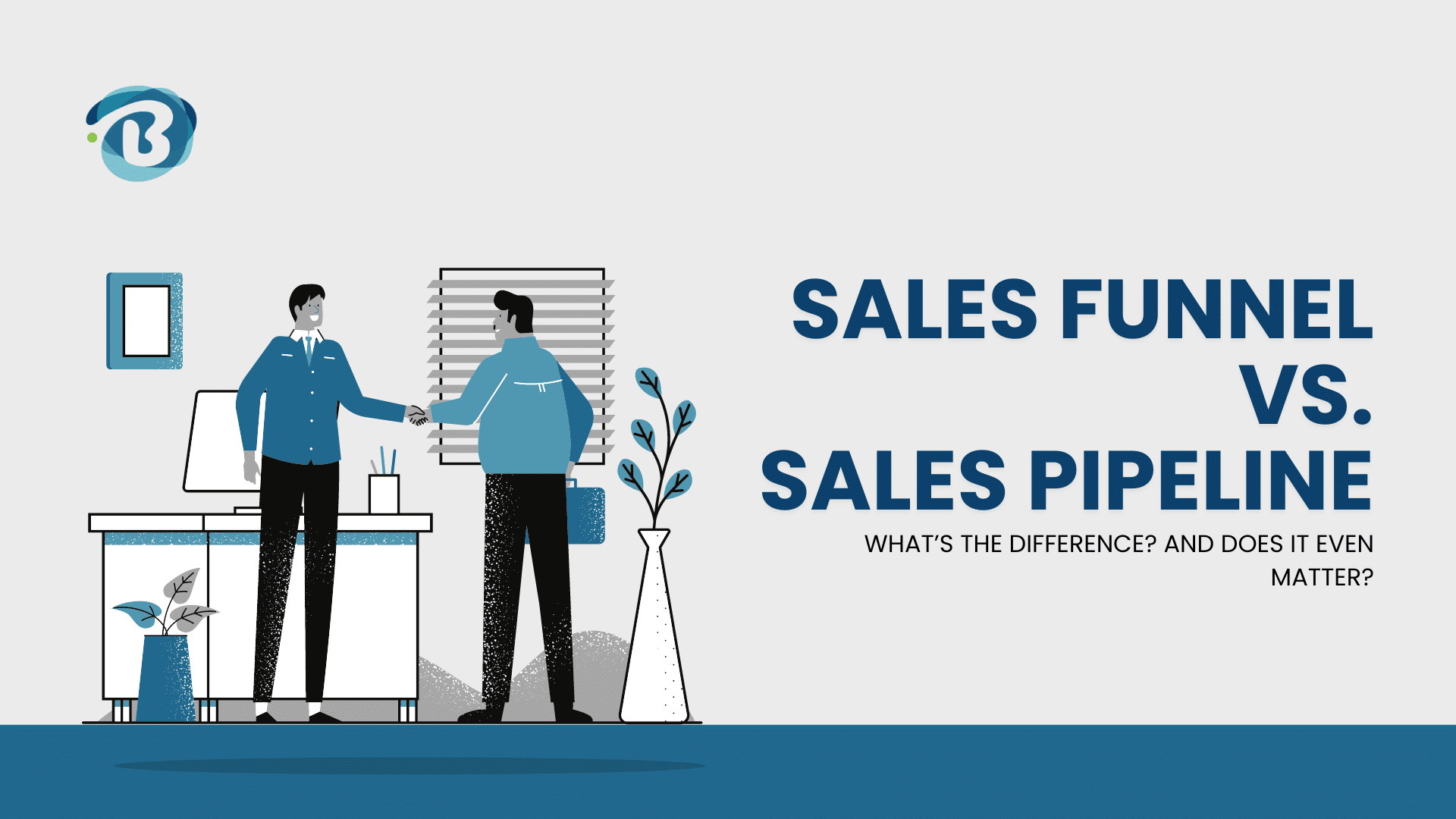Successful sales come down to understanding the fundamentals that need to be applied.
These fundamentals are the formulas and processes of sales.
In business, your sales operations and processes are essential. Once you perfect this to your company’s needs, you can apply the steps with the conviction that there will be a successful outcome.
Excellent sales processes go hand in hand with applying good sales formulas. By understanding the basics of these two components, they can work together to grow your business.
Sales Formulas: The Break-Down
For a business, sales formulas are the building blocks of creating solid sales processes to achieve successful sales.
The input-output nature of formulas allows a straightforward understanding of what you can use and measure for sales.
Sales formulas can determine how many leads are needed to get a desired number of clients, measure the conversion rate, current margins, and so much more.
The Importance of Formulas in Sales
Understanding sales formulas allow a business to gauge where it is at, from which it can implement the right processes to make successful sales.
Here is an overview of must-know terms:
Number of Leads – the number of potential clients
Conversion Rate – the number of leads converted into clients
Average Sale – the amount spent when they buy something
Number of Transactions – the frequency of sales
Margins – the gross or net margin achieved by the business
Essential Sales Formulas
There are a set of formulas that are the basics of sales and need to be applied from the start. Some key ones to keep in mind are:
Sales Margin: The amount of profit made on the sale of a product or service once any costs related to it have been taken into account.
= REVENUE – SALES ALLOWANCES/DISCOUNTS – COST OF PRODUCT/SERVICE SOLD – ANY COMMISSION
Sales Growth: The change in revenue over a fixed time period.
= (CURRENT SALES PERIOD – PREVIOUS SALES PERIOD) / PREVIOUS SALES PERIOD
Sales Conversion Rate: The effectiveness of a sales team at turning potential leads into new clients.
= (TOTAL NUMBER OF SALES / TOTAL NUMBER OF LEADS) X 100
Return On Sales: The efficiency of how a company converts sales into profits.
= OPERATING PROFIT / NET SALE
Sales Revenue: The amount of income a company receives from its sales of products or services.
= AMOUNT OF UNITS SOLD X AVERAGE PRICE PER UNIT (product-based)
= AMOUNT OF CUSTOMERS X AVERAGE PRICE OF SERVICES (service-based)
Revenue (average): The amount of income received from business operations on average.
= TOTAL REVENUE / AMOUNT OF CLIENTS
Recurring Revenue (average based on a monthly basis): The amount of revenue that is expected to continue in the future on average.
= TOTAL AMOUNT OF PAYING CLIENTS X AVERAGE REVENUE PER CLIENT
Sales Processes: The Structure
A structured sales pipeline and funnel are held together by good sales processes. Once the trial and error phase of seeing what works has lapsed, a business understands what works best.
From here, you can repeat these ‘processes’ to ensure streamlining.
Businesses need to implement what they know works to close sales more rapidly and frequently,
This becomes fool-proof with a structured approach and streamlined system, such as CRM software.
One can wonder how to improve their sales, and here the first step is to understand the business itself.
Here, we look at the target market, current processes, and sales stats. By breaking down the metrics such as the sales response time, success rate and other valuable insights, the team knows where they are currently and where they want to head.
The 7-Step Guide
As a typical rule of thumb, a sales process can entail a set of steps to be followed as a gauge and guideline.
The 7-Step Guide is important in understanding what successful sales come down to.
Prospecting
The first step of prospecting entails finding potential leads which could later convert into paying customers. In this, you are determining whether your business’s products or services are of need to them and, in turn, if a sale could be successful.
A second step to qualify is that they can also afford your offer.
Preparation
Next is the preparation step, which entails making first contact with potential leads. This step also involves market research and gathering information on the possible offer.
The key here is practising in every aspect, from knowing the sales pitch to answering potential questions. It would be best if you customised this to meet the tailored needs and requirements of each interaction with different clients.
The preparation step is key to making a successful sale.
With more understanding of the customer and their wants, you are better equipped to provide them with the best product or service to meet their expectations and exceed them.
Approach
Here the initial contact is made with the customer. Depending on the type of business or on the client themself, this can be:
face-to-face
over the phone
virtually over a video call
When approaching the client with your pitch, there are a variety of ways in which you can navigate this. You can ask questions to perk a client’s interest and engage them or offer them something for free in exchange for a review. Or, as you start the pitch, you can offer your client a premium product as a gift.
Presentation
The presentation is the actual sales pitch.
Here, you present your product or service and show how it can meet the client’s needs. Make it about the client, making them feel important and validated.
This will streamline their focus and allow them to see how the offer can benefit them.
Handling Objections
Handling objections is one of the more underrated steps of sales.
A considerable part of a successful pitch is being able to take the feedback that is given. A successful sales process comes from understanding what works but, more importantly, what doesn’t.
This comes from feedback, so it is essential to handle it well. In this step, the client expresses their potential concerns as objections, which you will then address.
By navigating this step correctly, you set yourself apart from the salespeople that do not make it past this. This will level your sales from average to excellent, improving with practice each time.
Closing
In this step, the client gives the go-ahead to proceed with the deal, and the sale is closed successfully. Here, the pitch can be closed in a variety of ways:
Presented Options: Here, the client is offered a choice of options that, either way, will end up closing the deal. An example would be to propose whether the payment will be paid in full once-off or alternatively in instalments.
Added Value: Here, the client is offered something of extra value as a final push to close the deal. Examples of this could be a discount or a month/week free.
Limited Offer: Here, the idea of a time limit is pushed to emphasise a limited offer nature to the deal. Examples of this could be stating that there are only a set amount of spaces left or that the given price is only valid for a limited time.
Valuable Insights To Keep In Mind
The Frequency Of Sales
This can be either a once-off or recurring regarding how often a sale occurs. The frequency of sales would need to be determined before closing it with a client to know how to proceed.
Naturally, the frequency could change as the relationship with a client matures, shifting from a once-off deal to a recurring sale. This is ideal as it entails a successful sales process has been applied, resulting in recurring income for the business.
The Direction Of Sales
Sales can move in various directions depending on the case, namely upselling, cross-selling and down selling.
Upselling
Upselling is the process of offering a sale of a higher value than the original sale to a customer. This entails a higher amount being asked and the deal being ‘upped’ in financial value.
Cross-Selling
Although sometimes used interchangeably with upselling, cross-selling is different in that it entails a customer being offered products or services related to the original sale or products or services that are complementary to it.
This is appealing as a sale that adds value to the original offer, further complementing it and increasing its perceived need, want or demand.
Down Selling
Down-selling is the process of offering a customer a product or service that is less expensive than the original offer when that sale was declined or even unsuccessful. At first, this may sound counterintuitive; however, it is of great value as a sales tactic.
The client is recovered by offering an alternative product or service. Although the sale might be of a lower value, customer retention is achieved, and brand loyalty is sustained, which is the longer-term goal.
BaseCloud CRM For Sales Processes
A sound CRM system can take the hassle out of sales processes. Through the power of automation, CRM software streamlines the process to ensure accurate and successful sales.
BaseCloud CRM is a renowned software that has done just that and more for our satisfied clients.
We offer a fully comprehensive sales tool that compiles all your analytics, results and insights in one place for added convenience and accuracy.
Having an automated structure to your sales funnel and pipeline is an innovative way of ensuring accurate processing and reporting of all business actions.
The Choice Is Yours
Sales processes are vital to have in place; however, this can be simple. Navigate your sales easily with a CRM system that streamlines everything for you.
Implementing good CRM software into your business allows the power of automation to work its magic. This gives you access to analytics and metrics like never before, enabling you to channel your focus exactly how you want to into your business.
BaseCloud CRM gives our clients this and more, allowing their businesses to grow further and further. If you are interested in seeing how your business can benefit from BaseCloud CRM for sales, get in touch with us today.




